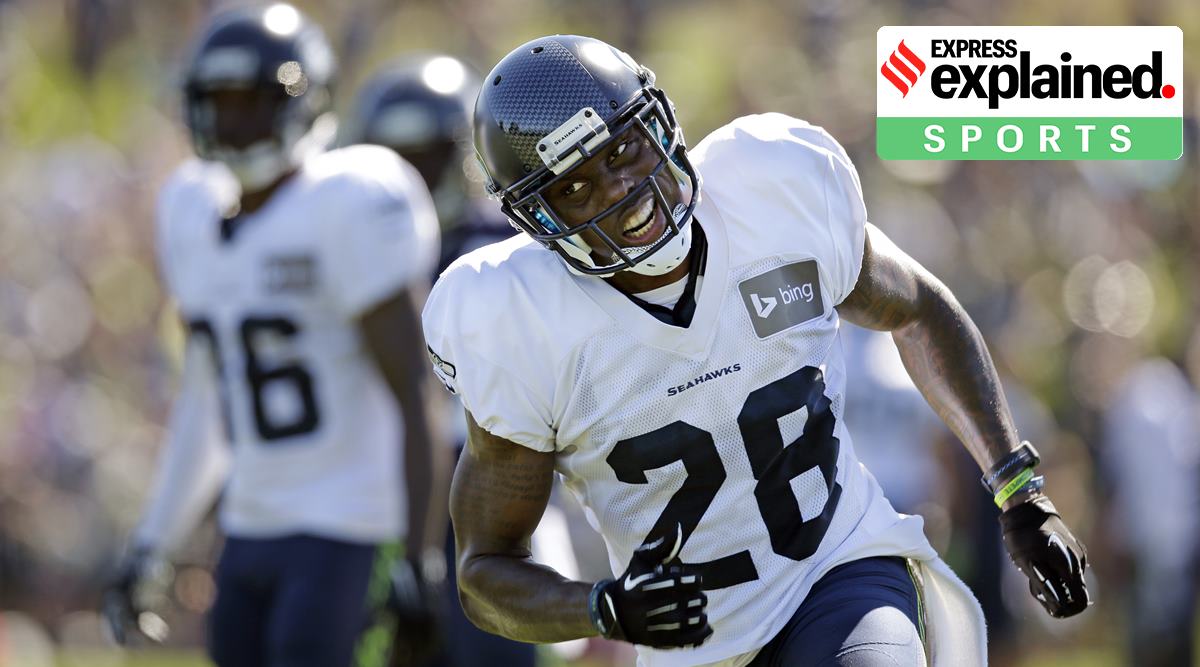
Since the start of the year, the United States of America has witnessed 147 mass shooting incidents, 45 of them in the last month, CNN reported.
This follows a period of lull. In 2020, the year of the pandemic, the least number of mass shooting incidents were reported in more than a decade, according to numbers compiled by The Associated Press, USA Today and Northeastern University.
Newsletter | Click to get the day’s best explainers in your inbox
Eight people were killed at a FedEx facility on Thursday, the latest mass shooting incident. Sport and mass shooting got intertwined earlier this month when Phillip Adams, a former National Football League (NFL) player, was identified as the person who shot and killed six people before turning the gun on himself at Rock Hill, South Carolina.
The coroner and autopsy experts have decided to examine Adams’ brain to find out if he suffered from chronic traumatic encephalopathy (CTE), a disease afflicting several former players in the high-contact sport.
Who was Phillip Adams?
Adams was a retired NFL player, functioning as a defensive back. He was on the rosters of teams such as San Francisco 49ers, New England Patriots, Seattle Seahawks, Oakland Raiders and New York Jets before retiring from the game in 2015 with Atlanta Falcons.
What happened?
Adams shot himself dead after a standoff with police at his home. He had been identified as the person who had opened fire the previous day, eventually killing six people – two senior citizens including a doctor, their two grandchildren, and two air-conditioning technicians – not too far away from his residence.
Any explanations?
Investigators have not identified any motive to the murders yet. Adams had no prior criminal record. “We have probably more questions than you do right now,” York county sheriff Kevin Tolson told reporters last week. He added that Adams didn’t seem to have any relationship with the people he killed.
However, Adams’ father argued that his son’s sporting past had something to do with the events. Alonzo Adams reasoned the shooting rampage was the result of injuries his son sustained during his football career. “I think the football messed him up,” he told WCNC-TV in Charlotte, North Carolina.
Adams’ sister, Lauren, told USA Today that his behaviour had changed in recent years and that his “mental health degraded fast and terribly bad,” adding that he had been seeing doctors. “(He was) kind of feeling like the whole world was against him.”
Phillip Adams sits on the sideline during the first quarter of an NFL football game in San Francisco. (AP Photo/Paul Sakuma, File)
Are the investigators taking this angle seriously?
Yes. Adams’ brain is now being examined for possible CTE, a degenerative disease that can prompt sudden violent behaviour and other cognitive problems in sports persons playing rough contact games and even members of the armed forces. Adams had been known to have suffered two concussions over three games in 2012, but whether those impacts resulted in any long-term injuries isn’t clear yet.
📣 JOIN NOW 📣: The Express Explained Telegram Channel
What is CTE?
According to Alzheimer’s Association, CTE is a progressive and fatal brain disease associated with repeated traumatic brain injuries (TBIs), including concussions and repeated blows to the head. It is also associated with the development of dementia. Those at greatest risk for CTE are athletes who play contact sports – such as boxers and football players – as well as military veterans, likely due to their increased chances of enduring repeated blows to the head.
Research is still ongoing but symptoms of CTE include memory and thinking problems, confusion, personality changes and/or erratic behaviour including aggression, depression and even suicidal thinking. These signs may not be evident until years or even decades after the brain injuries occur.
A diagnosis of CTE can only be made after death, when an autopsy can reveal whether the known brain changes of CTE are present.
A list released in 2016 claimed signs of CTE in the brains of 90 of 94 former and retired NFL players. A year later, a study showed 110 out of 111 brains had signs of CTE.
 At a memorial service and prayer vigil at Fountain Park. (AP Photo/Sean Rayford)
At a memorial service and prayer vigil at Fountain Park. (AP Photo/Sean Rayford)
How can forensic science help in the investigation of Adams’ case?
According to The Washington Post, forensic autopsies typically do not identify CTE, but York County Coroner Sabrina Gast said her office will work with Boston University, whose CTE centre has studied the disease for more than a decade, to determine whether Adams had the disease.
“Routine forensic autopsies do not identify CTE. We have contacted Boston University and they will be working with us to conduct a brain study to identify if Mr. Adams had CTE. We are unsure of the time frame for results at this time,” she said in a statement.
Is there any legal options available for NFL players suffering brain damage due to the nature of the sport?
Adams’ agent Scott Casterline told the Associated Press that his former client did not avail of the physical and mental health programmes offered by the NFL to former players. There was no testing to assess any brain damage either as Adams would not have been eligible for it as part of a broad settlement between the league and former players over such injuries, because he hadn’t retired by 2014.
His sister Lauren said Adams was pursuing a disability claim through the NFL.
“I know he had been applying for disability and he said they were making it hard for him. And toward the end, he felt like they were trying to basically stiff him on money. I think he got upset about that and that’s kind of where it started,” she said.
